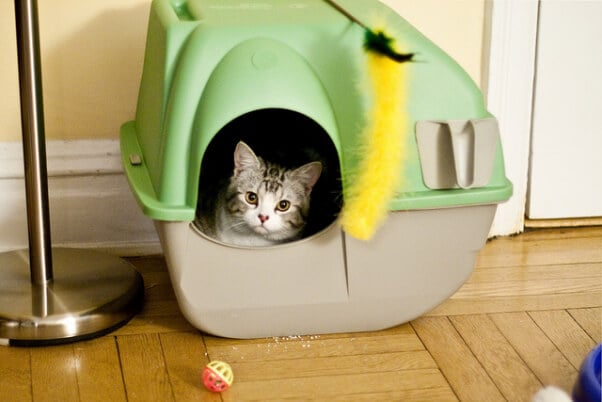I have been living with type 1 diabetes since I was 13 years old. The last time I visited my home state, Ohio (GO BUCKS), I had a chance to meet the only other member of my extended family who is also diabetic.
Just like humans, dogs and cats can also have diabetes. From personal experience, I know that it can be a tough disease, sometimes tricky to manage. This really got me to thinking about what it must be like for a cat or dog living with diabetes. Without any way to tell us directly how they are feeling, companion animals rely on their human guardians to notice when something is off.
But what does diabetes “look” like? While it’s true that you can’t see it, you can certainly see the symptoms if you pay attention to your cat or dog.
Change in Appetite
Is your dog suddenly eating much more than before? Is your cat leaving a lot of food untouched? An increased or decreased appetite may be a sign of not feeling well.
Weight Loss
When the body is deprived of insulin, which is needed to carry blood sugar to the cells for energy, it will begin burning fat. If your four-legged friend begins rapidly losing weight, especially if coupled with other symptoms on this list, you should schedule a vet appointment ASAP.
Here’s an easy way to tell that something may be amiss: Your animal is eating more than before but still losing weight.
Frequent Urination

For cats, this may take the form of urinating outside the litterbox or frequent urinary tract infections; for dogs, you may notice a sudden jump in requests to go outside. This is because some of the toxins that build up when blood sugar levels go unmanaged are expelled through the urine. Your animal’s body is saying something here—make sure you listen!
Excessive Thirst
This one is actually how I first realized that something was wrong with me. Because of the increase in urination, your dog or cat will be excessively thirsty, attempting to replace those lost fluids. These two symptoms, excessive thirst and urination, will likely go together, so pay attention.
Note: When cats and dogs continue this cycle of frequent urination and excessive thirst, they can become dehydrated. How do you know if a thirsty animal is dehydrated? One quick way to check is by gently pinching up some of the skin and fur on the back and then letting it fall back into place. A well-hydrated animal’s skin will quickly snap back, while a dehydrated animal’s skin will slowly collapse back down.
Sweet-Smelling Breath
When a body deprived of insulin begins burning its own fat stores to supply energy, compounds called ketones are released into the blood stream. Acetone, a type of ketone, is typically expelled from the body through the breath, which will smell unusually fruity or sweet (in stark contrast to most dog and cat foods), so this is an easy way to tell if something is wrong the next time you’re snuggling.
Lethargy

When too many ketones enter the bloodstream, the body itself can become acidic. Trust me when I tell you, this feels awful. If your animal companion can’t keep his or her head up for more than a few minutes or has experienced a sudden decrease in energy levels, be sure to get to your vet as soon as possible!
Vomiting
Just like with the toxins pushed out through the breath and urine, this is one of the body’s ways of telling you that it wants something that is currently inside it OUT.
Unkempt Coat/Chronic Skin Infections
Is your cat’s coat losing its shine? You may even notice flakes of dried skin. Has your dog been diagnosed with multiple skin infections? These are signs that your cat or dog may be suffering from untreated diabetes.
Cataract Formation/Change in Vision

Extended periods of elevated blood glucose levels can lead to the development of cataracts and, just like in humans, blindness. It’s important to get your animal checked out before symptoms progress too far.
NOW, LISTEN: I’m not a doctor, for humans or for animals. If you suspect something is off with your best (non-human) friend after reading this, consult a professional! Always keep an eye—and a hand—on your companion animals. They rely on you to know when something is wrong, so you have to be sure that you know what “normal” looks and feels like for them. Because animals typically consume significantly fewer sugars and carbs than humans do, the signs of untreated diabetes may build up slowly over time. Your veterinarian can perform necessary blood tests to find out what’s going on and get you all set up to take proper care of your cat or dog if diabetes turns out to be an issue, so be sure to have regular check-ups as well.







